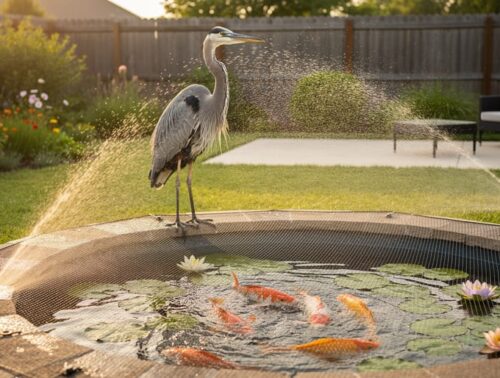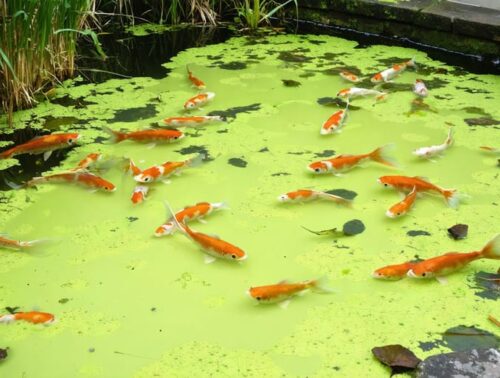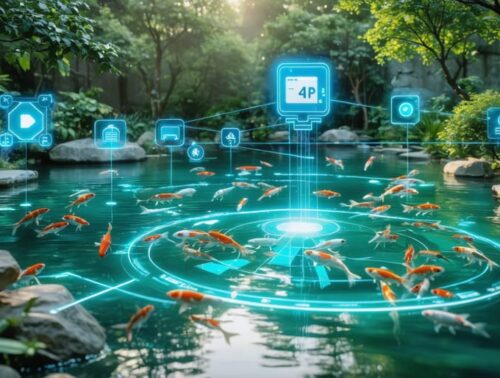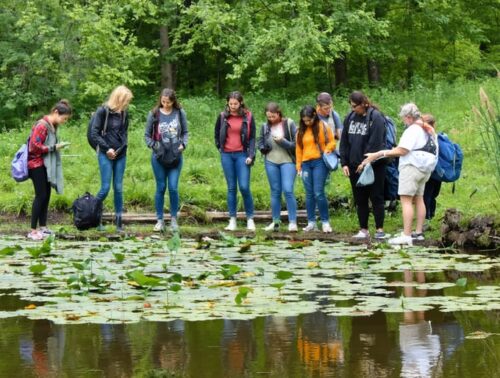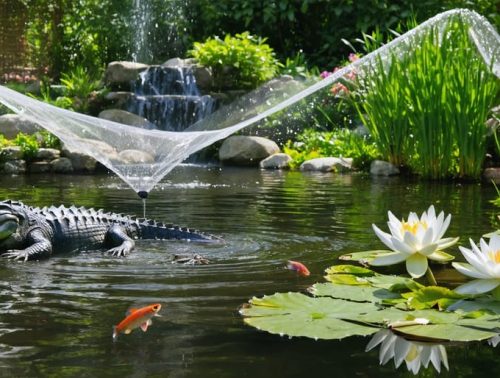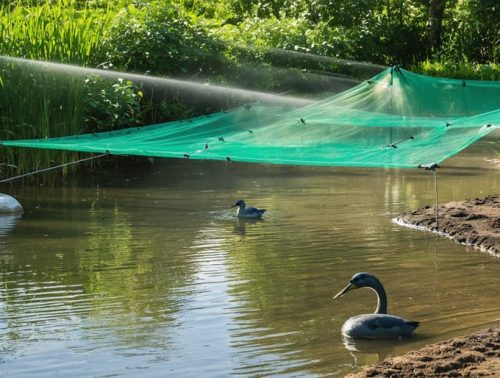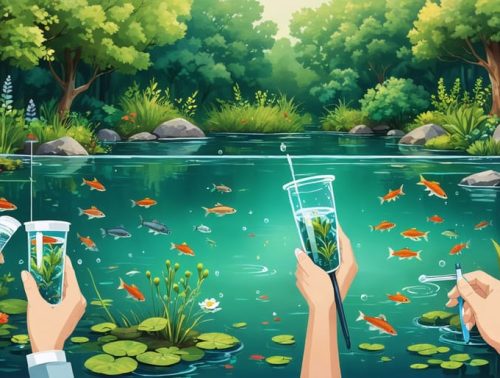Why Herons Keep Finding Your Pond (And How to Protect Your Fish Ethically)
Install motion-activated sprinklers around your pond perimeter to startle herons and raccoons before they reach your fish—these devices detect movement and release harmless bursts of water that teach predators your pond isn’t worth the hassle. Position them 3-4 feet high for best coverage.
Create physical barriers using pond netting stretched 6-8 inches above water surface, securing edges with stakes every 2 feet so predators cannot wade in or reach through. Clear monofilament netting becomes nearly invisible while providing complete protection without harming wildlife.
Add hiding places for your fish by placing PVC …

